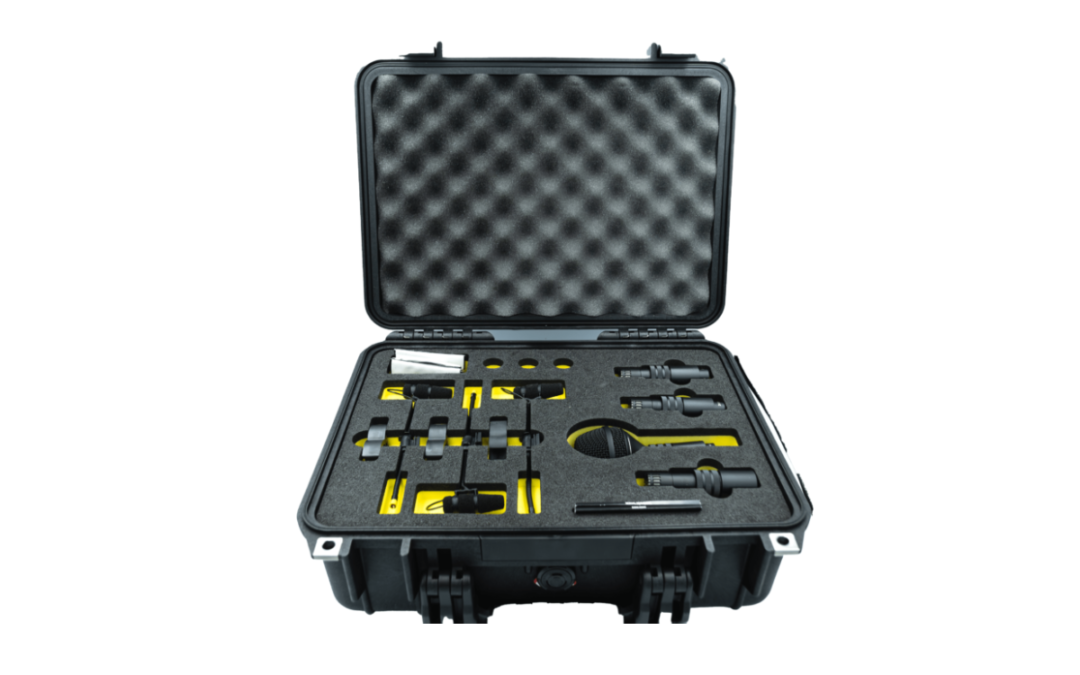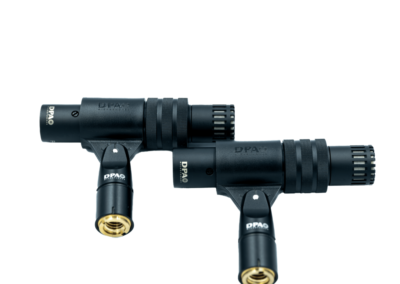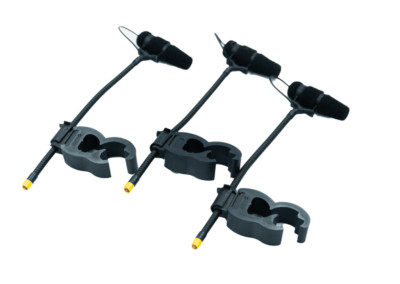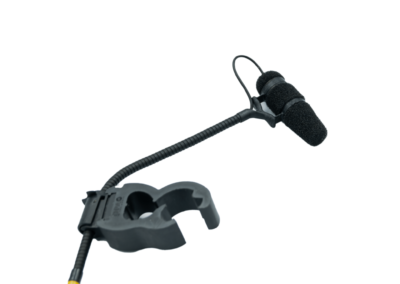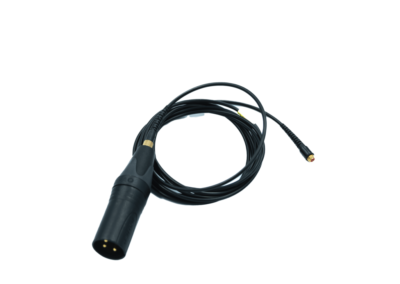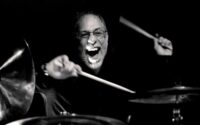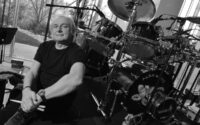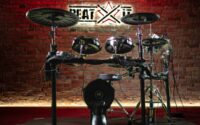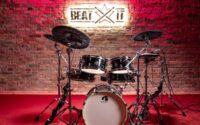DPA Microphones is the leading Danish Professional Audio manufacturer of high-quality condenser microphone solutions for professional applications. DPA’s products are globally praised for their exceptional clarity and transparency, unparalleled specifications, supreme reliability and, above all, pure, uncolored and undistorted sound.
This is what the manufacturer boasts on its website. Will our test confirm it?
Over 30 years of drumming, recording and mixing, we have come across these microphones many times on our musical journey. We have always wondered why so many engineers and musicians praise these microphones, and what their phenomenon is based on. After all, these are not American products, not even German ones :-). We have never been fully convinced as to the correctness of these statements. Somehow we never had the opportunity to test them thoroughly.
One spring day, we received a call from Konrad Majchrowski, the DPA representative in Poland, who offered us the opportunity of testing the new set of drum microphones called DPA DDK 4000. Konrad said that he was calling us, because we are the only ones who can objectively comment on this topic since we are drummers and sound engineers in one, plus there’s the website, the drum school. “Okay, okay, send the over…” – we eagerly undertook the task.
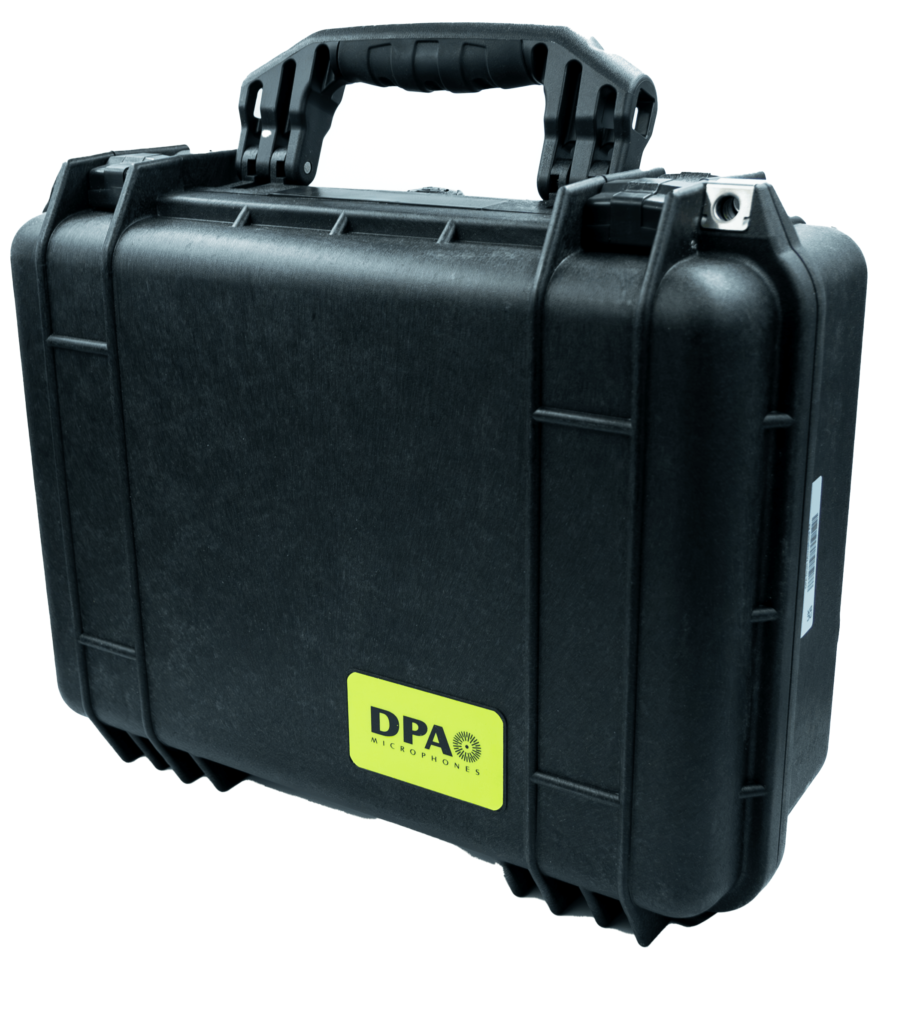
After the parcel had arrived, we opened the box, and we saw a case that could easily be a “Star Wars” prop. The professional Peli™ Case guarantees that nothing wrong will ever happen to the microphones during transport and in storage. The case is extremely durable, water and dust resistant. It is equipped with a valve that equalizes the pressure generated under water or during the movement of an aircraft and is additionally sealed with a GORE-TEX insert.

A few more words before moving on to the matter at hand, i.e. the test. When working with these mics, every step of the way, one can see the highest quality of the product, from details such as logos, through accessories (cables, plugs, baskets), and the microphones themselves.
1. Test
We conducted the test in our new studio (Luta Recording Studio), in an acoustically adapted room. The live room is over 40 m2 and the roof is 6 meters high. Drum do get enough air here, which definitely translates into sound quality. We also used a 24″ x 18″, 15″ x 14″, 13″ x 10″ DW Collector’s Maple drum kit and a 1970s Ludwig Supraphonic snare. The cymbals are Zildjian K Dry series: a pair of 14″ hats, an 18″crash, a 21″ride and a 19″ holey crash.
The session was recorded with the use of an RME UFX+ card along with its preamps (OH , KIK I SNARE), a Mackie TT24 board (TOMS, HIHAT) and an onboard ADAT converter. Everything was sent to CUBASE 12 and exported as wave files at 48 KHz with a 24-bit resolution.
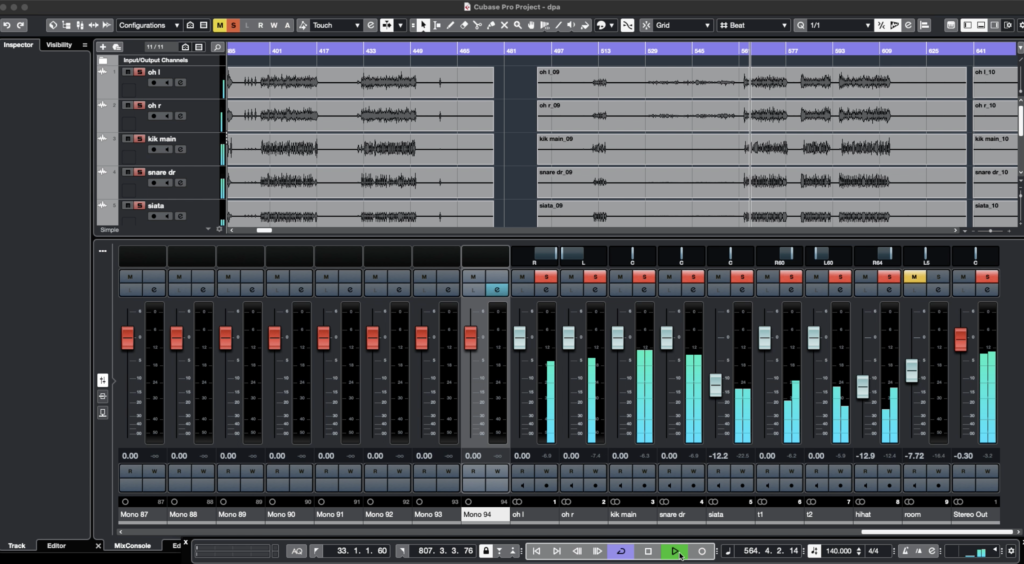
In our test, we didn’t use any other sound shaping options other than volume and pan balance. Most of the faders were set to the 0 dB position. We didn’t use a gate, compressor, EQ or limiter on this recording. This means you’re getting a reliable source to hear how these mics perform on drum recordings. Imagine what happens if you use an additional audio processor.
2. Basic specs of the microphones set tested here
Microphones:
- 1 x 2012 cardioid microphone
- 2 x 2015 wide cardioid microphone (stereo pair)
- 1 x 4055 bass drum microphone
- 3 x 4099 core instrument microphone, Extreme SPL
Accessories:
- 3 x MicroDot cable (CM2218B00)
- 3 x drum microphone clip (DC4099)
- 3 x adapter for MicroDot to 3-pin XLR (DAD6001)
3. Product
We are very impressed with how perfectly these microphones record a drum kit. Each of them records transparently, capturing a hundred percent of the sound of the individual instruments included in the set. Each of them naturally balances in the mix, without the need for faders. Our recordings are set to ZERO dB! No band is excessively boosted or overdriven. What is recorded is what should be recorded, and it is up to the engineer whether he or she will use it and how they will do it.
Take a listen to what the drum kit sounds like with all the mics on:
Let’s now describe each of the microphones included in the set and our impressions of them:
The 4055 bass drum microphone
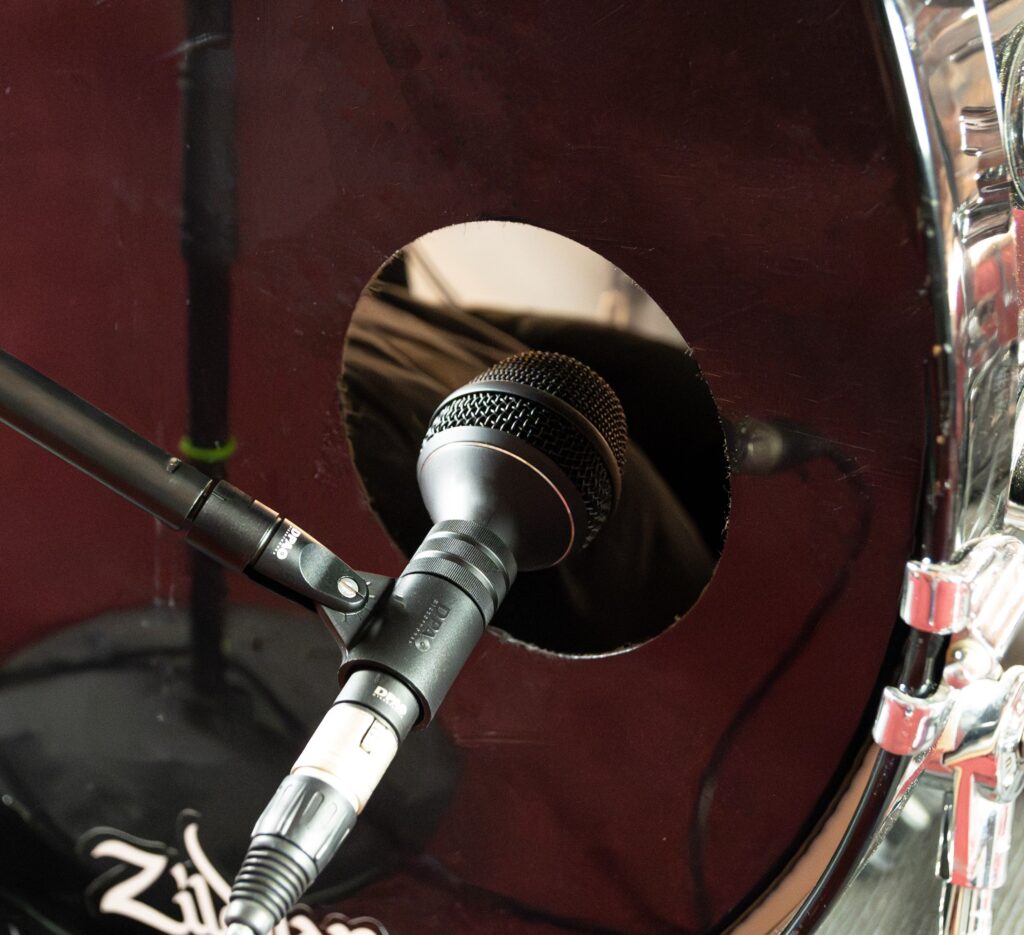
In our opinion, this microphone carries all the characteristics needed to amplify the bass drum in the mix. It has got great dynamics, a full band range from the low end of 60-80 Hz, up to the 5-8 kHz that is so favored by metal bands. Also, for the fans of punchy kick drum sounds, it is simply a must-have in the studio and on stage, due to the way it captures the midrange. We should also add that the microphone works great in terms of positioning in relation to the sound source. Close to the beater it will capture more mids and highs, and farther from the porthole – it will capture more lows. All you need is just tweak the EQ a bit, add some compression and there you are! The microphone also works perfectly without any additional fireworks. Also, check the separation of this and other microphones. The gates in your mixes may turn out to be redundant! Anyway, listen to the sound of this mic in the samples below:
4099 instrument microphone, Extreme SPL

We used these three microphones to amplify our toms and snare. Firstly, we got great separation right away. You will see in the photos and video that the microphones are quite far away from the instruments, so as to give them as much air as possible. Any other microphone in this position would pick up everything around it. Here, too, we are dealing with a full-band sound, without any boost or loss. Each of the instruments sounds the way it should and mixes great. We are downright afraid of what’s going to happen when we use EQ, compressors, peripherals and VST plugins. We must add that these microphones look great on the drum kit. They do not make it look laboured, nor do they take up unnecessary space. Once again, it should be emphasized that the quality of the microphones and the components is the absolute top!
2012 cardioid microphone

We tested this microphone for capturing the hi-hat. It can also be used for other instruments. Listen to how great the hi hat sounds. It is, after all, quite a difficult instrument to amplify and record due to its dynamics and explosiveness. The mic takes no prisoners in our test and it is perfect for recording the hi-hat both closed and open. Once again, we were able to achieve great separation. Take a listen!
2015 wide cardioid microphone (stereo pair)
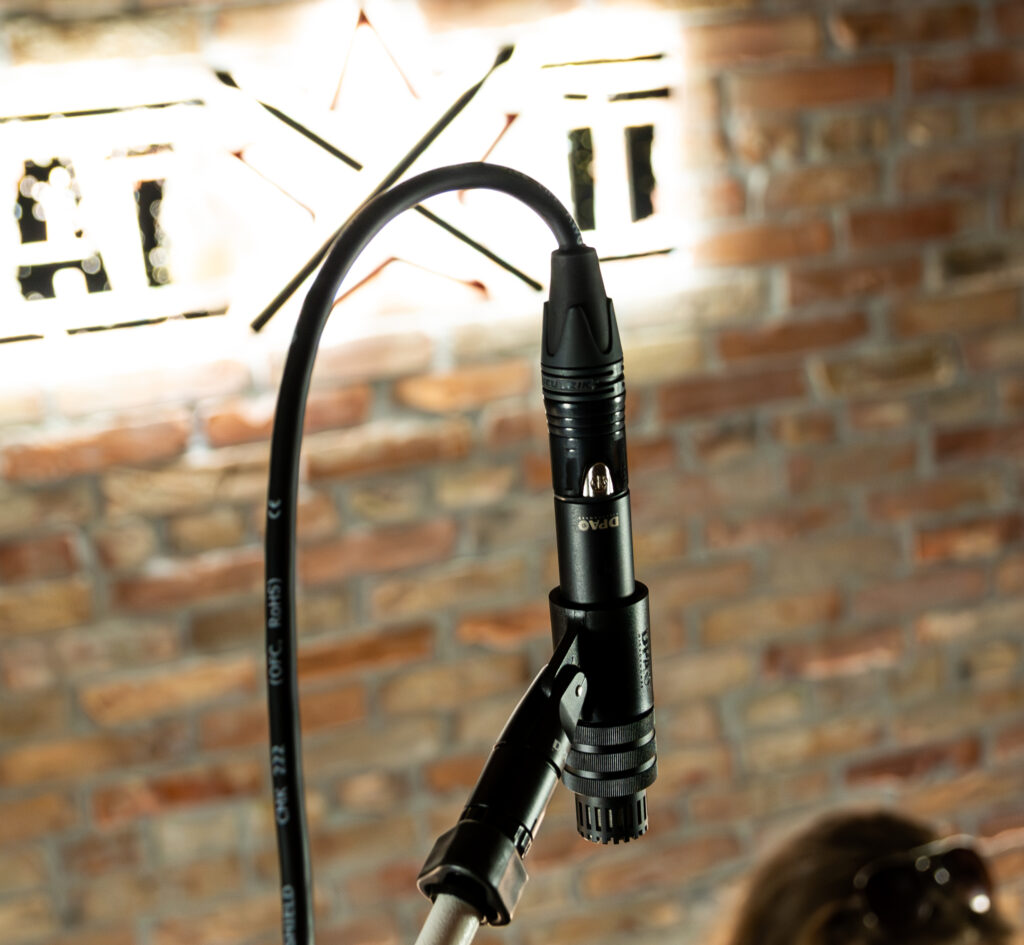
Also in this case, we have to say that these microphones do the job. We haven’t heard such perfect overheads in a long time. Nothing is boosted or overdriven, the details of the cymbals sound beautiful. We put these microphones quite high up (at almost 3m) and you can’t hear it when listening back. One can hear great depth with amazing attention to detail. The wide cardioid nature of the microphones makes even large and powerful sets (like ours) sound coherent and very natural. Again, the quality of workmanship a huge plus.
Beatit.tv · DPA 2x 2015 OH MICS (GROOVE)
4. Summary
The DPA DDK 4000 drum microphone kit is a fully professional tool for amplifying and recording a drum set. Due to the versatility characterizing each of the microphones, we can also use them for such instruments as: vibraphone, marimba, piano (the 2015); bongos, conga, guitar amp or acoustic guitar (the 2012); trumpet, electric or bass guitar (the 4055); double bass, cello, flute, oboe, accordion or clarinet (the 4099). Perfect workmanship based on the highest quality components, such as brass (capsule body), gold-plated Mylar foil (capsule membrane) or chrome-plated elements, make these microphones reliable devices that will serve their purpose for many years to come. The appearance of these microphones and attention to detail make the user feel appreciated, and the user’s instrument “put on tasteful attire”. However, all this must not overshadow the most important function, which is how the microphones capture sounds. These mics “hear” things as they are in reality, without falsifying them. They transparently reproduce the sound of each instrument with attention to detail. They provide great separation. You don’t have to do anything, just place them correctly and take care of a good level of recording. The mix almost balances itself. The only thing that’s disputable is the rather high price compared to similar solutions from the competition, but the competition does not have such microphones 😉
We give these microphones the highest rating 5 TOP
Please watch and listen to our video test below.
Here is the score achieved by the DPA DDK 4000 microphone kit:
 Appearance: 10
Appearance: 10
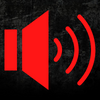 Sound: 10
Sound: 10
 Innovation: 10
Innovation: 10
 Price: Well…
Price: Well…
 Quality: 10
Quality: 10
TOTAL SCORE: 50
 Disadvantages – None
Disadvantages – None

In-between: None
 Advantages – Versatility, faithful reproduction of recorded sound, perfect for recording a drum kit, great craftsmanship, excellent look.
Advantages – Versatility, faithful reproduction of recorded sound, perfect for recording a drum kit, great craftsmanship, excellent look.
The total score is: 5 TOP



